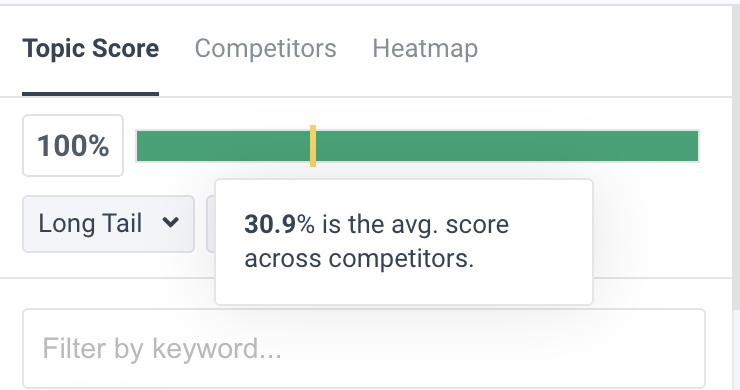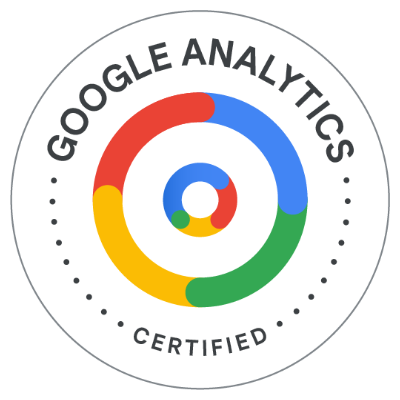Business Process Automation
Our automation services can leverage artificial intelligence technology to streamline and optimize processes within an organization. This can include tasks such as data entry, customer service inquiries, scheduling appointments, and much more. By implementing AI automation services, businesses can improve efficiency, reduce manual steps, and save valuable time and resources.
As the labor shortage continues to pose challenges for business leaders across all industries, AI automation presents a promising solution. With advanced AI technologies like ChatGPT, businesses can leverage machine learning algorithms and large language models to streamline their business processes, improve productivity, and achieving more favorable outcomes by freeing up high value employees to focus on more complex and strategic initiatives. This will result countless man-hours of savings by automating manual and routine tasks.
By incorporating AI into operations, companies can not only overcome the limitations posed by the labor shortage but also drive innovation and improve overall productivity in the long run. The future of work is undoubtedly being shaped by AI automation, offering opportunities for businesses to thrive in an increasingly competitive market landscape.
What is the role of an AI automation agency?
Our AI automation agency assists businesses in implementing AI technologies and automation solutions into a wide range of business operations using no-code solutions developed by companies like OpenAI, Google, Microsoft, Anthropic, NVIDIA, and others.
Our AI automation agency specializes in helping businesses identify areas where AI can be implemented to streamline operations and improve efficiency. Our team works closely with clients to assess their current processes and determine which tasks can be automated using AI technology. By leveraging machine learning algorithms and large language models, our AI automation agency can create custom solutions tailored to each business's unique needs.
In addition to streamlining processes, our AI automation agency also provides ongoing support and maintenance for AI solutions, ensuring that they continue to operate effectively and adapt to changing business needs. Our agency also offers training and education for employees to help them understand how AI automation can benefit their work and improve overall productivity.
Overall, the role of an AI automation agency is to help businesses harness the power of artificial intelligence technology to drive innovation, improve efficiency, and stay competitive in today's rapidly evolving business landscape. By partnering with an AI automation agency, businesses can unlock the full potential of AI technology and achieve sustainable growth and success in the long term.
Typical AI services
Our AI automation agency offer a variety of services focused on assisting business leaders to streamline specific business processes, improving productivity and achieving more favorable outcomes. We'll examine some areas where AI automation can provide substantial benefits:
Improving workflow efficiency
Our AI automation team focuses on optimizing workflows by analyzing current processes, identifying repetitive tasks and bottlenecks, and implementing AI solutions to automate them.
In this example, we created a workflow that would address our own organization's need to automate our new lead onboarding process. Our website's form capture process was completely manual. When someone fills out a form, we get an email notification and then the business development rep would manually enter all of the captured data into our CRM.
An example of how we push data from our Gmail to a CRM; creating a new client record from form fills.
Healthcare Use Case
We have a primary care client who uses a HIPAA-compliant Jotform tool to capture new patient onboarding information. They receive anywhere from 65 to 115 form submissions a week and have one (1) Full-time Employee (FTE) who spends about 40% of their time responsible for entering this data and making outbound calls to schedule new patients into primary care appointments.
In this scenario, we use AI to capture the HIPAA-compliant JotForm submission, map and populate the fields to their CRM, add a record to our HIPAA-compliant MailChimp account, send out an email to the new patient inviting them to schedule their first primary care appointment. Now our admissions rep will spend their time focused only on those people who do not respond rather than the whole population saving them time and increasing their effectiveness.
Sales Automation
In this last AI automation example, you were exposed to how we can capture data, map it and can kick off tasks and send off communications. We created a process that helps support our sales process.
A lead source for our agency is UpWork. We have a business develop representative who searches the UpWork jobs and responds to job posts. We built a tool that scraps UpWork job posts using their API and RSS feed, catalogs and scores them, posts them to a Google Sheet, writes a description of the job post, writes a cold email introduction for our sales rep - allowing our business development reps to bid on Advertising and SEO projects faster and with more efficiency.
We built a tool that scraps UpWork job posts, catalogs and scores them - allowing our business development reps to bid on Advertising and SEO projects.
Sales Automation Use Case
We have a test prep client who has a similar sales process however they use jobs posted to Tutors.com and Wyzant.com for leads. We are building them a job scraping tool. The same fundamentals work with just a few modifications.
We built a tool that scraps UpWork job posts, catalogs and scores them - allowing our business development reps to bid on Advertising and SEO projects.
Content creation using AI technology
There are powerful AI tools that can significantly accelerate your content creation process and optimize content effectively. With its AI-powered capabilities, these AI tools can help generate high-quality content in a fraction of the time it would traditionally take.
One of the leading tools is Frase.io. Overall, Frase.io is a powerful AI tool that can revolutionize the way content is created and optimized. Its advanced capabilities streamline the content creation process, saving time and ensuring high-quality output. By leveraging AI technology, businesses can stay ahead of the competition and produce engaging, SEO-friendly content that resonates with their target audience.
One key feature is its ability to analyze user-provided topics or keywords and automatically generate outlines for articles and blog posts. This saves writers valuable time in brainstorming and structuring their content, allowing them to focus on the actual writing process.
Moreover, these AI tools offer a Content Brief feature that provides writers with detailed guidelines on what to include in their articles based on top-performing content in similar topics. This ensures that the produced content meets user expectations and is more likely to resonate with the target audience.
Frase.io Heatmap is a tool that assists businesses in analyzing and visualizing website content performance in relation to competitors covering similar keyword themes. (See image for this article)
These AI writing tools integrate seamlessly with various content management systems and SEO tools, providing users with valuable insights and suggestions to optimize their content for search engines. By analyzing competitor content and identifying relevant keywords, these tools help users create content that is highly optimized for organic search traffic.
Internal Employee chatbots
Creating an internal employee chatbot can greatly enhance efficiency and productivity. By pairing large language models with knowledge bases, the chatbot can provide instant access to technical documents and manuals, answer common employee questions, and streamline communication within the organization.
Let's use a manufacturing organization as an example. To implement this, the organization can start by compiling all relevant technical documents, manuals, and FAQs into a centralized knowledge base. This knowledge base will serve as the foundation for the chatbot's responses.
Next, integrating a large language model AI technology like GPT-4 will enable the chatbot to understand natural language queries from employees and provide accurate responses based on the information stored in the knowledge base. These models are capable of processing vast amounts of text data and generating human-like responses.
For example, if an employee needs information on a specific manufacturing process or troubleshooting a mechanical procedure, they can simply ask the chatbot using natural language. The chatbot will then search through the knowledge base and provide detailed instructions or relevant documents in real-time.
This internal employee chatbot can significantly reduce the time employees spend searching for information manually, improve overall operational efficiency, and ensure consistency in communication across different departments within the organization.
Overall, leveraging AI technology to create an internal employee chatbot for a manufacturing organization can streamline processes, enhance collaboration, and ultimately drive better business outcomes.
Customer Service chatbots
AI chatbots provided can offer 24/7 customer support, answer basic questions, and qualify leads, helping businesses improve customer service efficiency and allowing human representatives to focus on more complex inquiries.
At our agency, we prioritize training our AI to be as helpful as possible by utilizing your website, videos, and knowledge bases to provide quick access to information. By consistently updating and optimizing these resources, we ensure that our AI has the most up-to-date and accurate information to assist users effectively. This not only enhances the user experience but also helps drive organizational goals by increasing efficiency, reducing response times, and improving customer satisfaction. Additionally, by continuously monitoring and analyzing user interactions with the AI, we can identify areas for improvement and fine-tune its capabilities to better meet the needs of our clients.
Back in the early 2000s, we were introducing the internet into business processes. Instead of everyone having huge server rooms, we could move your heavy computing to the could with a SAAS solution. Laggards complained the internet was too new and unreliable to support their operations. People said it was a fad and it would pass. We saw early adopters gain huge efficiencies over other businesses who lagged behind the technology adoption curve. AI has the same disruptive potential to help improve business operations, increase efficiency, drive down costs and reach strategic business goals.
Training the AI
Organizations of all sizes are leveraging artificial intelligence (AI) and natural language processing (NLP) by layering their company's knowledge base (e.g., user manuals, white papers, member handbooks) on top to streamline certain processes and enhance customer experiences.
An AI chatbot is a program that uses artificial intelligence to simulate conversation with users, typically through text-based chats. These chatbots are designed to understand natural language and provide automated responses to user inquiries or requests. Through machine learning and natural language processing technologies, AI chatbots can continuously learn from user interactions and enhance their ability to accurately respond to queries.
AI chatbots can efficiently handle large volumes of queries. They can provide instant and accurate answers to common customer questions, freeing up humans to focus on more complex issues and relationship building.
Overview: 'Training AI on Your Knowledge Base' Process
Training an AI chatbot on an organization's knowledge base requires multiple steps to ensure the chatbot can accurately retrieve and deliver relevant information to internal and external customers. Here is a high level overview of the process:
Data collection is an essential initial step in training an AI chatbot, involving gathering relevant data from various sources such as product information, troubleshooting guides, FAQs, customer service scripts, and other documents containing useful information for customer inquiries.
Data preprocessing is an important step in preparing collected data for chatbot training. This process includes tasks such as eliminating duplicates, ensuring data formats are consistent, and organizing the data for better readability by the AI model.
Training the AI model involves using machine learning algorithms to teach it patterns and relationships within the data. This process helps the model understand how different pieces of information are connected and how to retrieve them based on user queries.
Natural Language Processing (NLP) techniques are utilized to assist the AI in comprehending and interpreting human language. This includes analyzing text inputs from users, recognizing important words and phrases, and generating suitable responses based on those inputs.
Testing and evaluation are critical steps in assessing the AI model's performance. Sample queries are used to gauge the accuracy of information retrieval from the knowledge base, and any errors must be identified and corrected at this stage.
Continuous improvement is necessary when training an AI chatbot. Monitoring and refining the chatbot's responses is an ongoing process that may require updates as new data and customer inquiries arise.
By implementing these steps, organizations can train their AI, using their knowledge base, enabling them to offer precise and timely support.
Let’s schedule time to review the business processes you’re interested in optimizing.
Integration of data from multiple sources.
AI has the ability to store, organize and update large amounts of data. These tools can automate mundane and routine and manual tasks that organizations are paying people to do. Although these tools may one day replace some workers, in our experience, this has afforded organizations to re-focus staff to more complex tasks and those things that require relationships and critical thinking.
In this example, you can see that AI can create and update records from multiple sources. These are processes that were once only available to tech titans and fortune 100 companies. The costs and availability of these tools have changed and now available to mid-sized companies. You’ll find these tools are:
Conversational
Fast
Accurate
Efficient
Reducing Operating expenses With AI
Utilizing an AI-powered omni-channel strategy can lead to substantial reductions in operational expenses. These tools have the ability to enhance efficiency by automating text-based tasks and processes, ultimately resulting in cost savings.
Integrating multiple communication channels like emails, SMS, and chatbots into one application can help minimize operational costs.
Using traditional methods, contact centers and front office staff handle each communication channel separately, which calls for different tools, systems, and resources. However, implementing an AI-powered omni-channel strategy can streamline customer conversations by consolidating them into one centralized platform. This can reduce the dependence on multiple tools and resources, ultimately leading to lower operational costs.
Integration of artificial intelligence with email systems.
The AI Knowledge Base solution is designed to offer quick and personalized responses for text-based interactions like chat and email. It utilizes advanced features such as natural language processing and multi-source data integration.
AI knowledge bases have transformed the customer service industry by automating responses to inquiries, enabling customer service teams to dedicate their attention to more intricate issues that necessitate a personal touch.
Integration of AI into SMS texting systems.
Our AI Knowledge Base solution offers support for SMS conversations by integrating with Twilio. This integration allows for the creation of a custom SMS bot that can engage in natural conversations, provide personalized responses based on business content, and deliver instant answers to customer inquiries through SMS, similar to ChatGPT. This can enhance customer engagement and potentially boost sales through conversational interactions.
The implementation of AI algorithms and chatbots can effectively manage a large number of customer inquiries, resulting in decreased staffing needs. Automated responses and self-service features offered by AI-powered chatbots enable agents to concentrate on more intricate and essential duties. Through the utilization of AI technology, contact centers can streamline their workforce, resulting in enhanced efficiency and decreased operational expenses.
AI Interaction Analytics and Reporting
The reporting and analytics tools for auditing conversations offer the option to export chat logs in formats like CSV, JSON, or XLSX files. This compatibility allows for easy analysis in common applications such as Google Sheets or Excel. An API is also available for users who prefer more advanced workflows.
These tools and formats are created to assist users in analyzing chat interactions comprehensively. By reviewing these logs, users can perform a variety of analytical tasks.
Analyzing chat logs for emerging trends and popular topics can help optimize content for SEO and resonate with customer interests.
The process involves comparing customer queries with current content, identifying discrepancies, and then creating or modifying content to address those gaps, ultimately increasing engagement and satisfaction.
Continuous chat log analysis aids marketing teams in refining and optimizing content strategies by providing feedback and ensuring relevance to meet evolving customer needs and expectations.
Support is available to assist users in understanding and extracting insights from exported AI Chatbot logs for those new to the technology or seeking guidance.
An AI-powered omni-channel strategy can lead to decreased operational costs by consolidating customer conversations into a single application, incorporating AI algorithms and chatbots, and utilizing predictive analytics. This can result in enhanced efficiency, cost savings, and an improved customer experience for contact centers.
AI knowledge bases offer the potential to decrease operational expenses through the automation of repetitive tasks.
Artificial Intelligence (AI) knowledge bases have transformed business operations by offering a cost-effective solution for managing repetitive tasks. These knowledge bases are constructed from extensive collections of data and information that can be accessed, structured, and utilized by AI systems.
Knowledge bases have a wide range of applications, from customer support to data analysis. They can save time, enhance productivity, optimize resource allocation, minimize errors, and identify patterns that may have been overlooked. As AI technology advances, knowledge bases are becoming increasingly valuable for organizations seeking to delegate mundane tasks to intelligent systems in order to maximize cost-effectiveness.
Drive Cost Savings With AI
Cost savings may be a major reason why an organization would consider piloting or implementing an AI solution. It could potentially
Reduce the number of full-time employees (FTE) required to focus on manual tasks. These team members can be re-purposed to work on more complex, high-value tasks
Reduces the need to expand customer service department headcount as business expands
Allow a customer service representative to manage more work differently increasing overall productivity
Cost savings can be categorized as hard savings and soft savings. Hard savings are concrete reductions in costs that directly affect a company's financial statements. Examples include cutting labor costs, insurance benefits, and IT expenses. Hard savings are easy to measure and produce immediate financial benefits.
Soft savings are more difficult to quantify as they are achieved through process improvements that indirectly contribute to cost reduction. These improvements, such as enhancing productivity or minimizing errors, may not have a direct impact on financial statements but they improve overall efficiency and contribute to long-term cost reductions.
Implementing a knowledge base and utilizing AI automation can lead to cost savings. A knowledge base provides employees with access to accurate information in one central location, reducing time spent searching for resources and improving productivity while lowering operating costs.
Describing the AI knowledge base Benefit for Employees
AI knowledge bases are tools that allow machines to store and access information efficiently. These databases contain a large amount of data that can be used by AI systems in text-based conversations to serve various purposes.
Internal employees have the option to utilize an AI knowledge base chat system for enhancing and streamlining their work processes.
Internal employees have easy access to relevant information, including company policies, procedures, and guidelines, through the AI knowledge base chat, reducing the time spent searching for information manually.
New employees have the option to use the AI knowledge base chat for training and onboarding, allowing them to ask questions about processes, systems, and best practices to quickly onboard and understand their role.
Employees can use the AI knowledge base chat to troubleshoot problems and find solutions, enabling them to resolve issues more effectively.
Employees have the opportunity to collaborate with colleagues through the AI knowledge base chat by sharing information, discussing ideas, and seeking advice, which fosters knowledge sharing and teamwork within the organization.
Internal employees have the option to utilize the AI knowledge base chat for task management, including setting reminders, scheduling meetings, and tracking project progress. This feature aids in organization and focus on work responsibilities.
Employees have the opportunity to provide feedback on the AI knowledge base chat system to propose improvements or updates based on their usage experience. This feedback loop aids in enhancing the functionality of the system over time.
Internal employees have the opportunity to use an AI knowledge base chat to simplify work processes, boost productivity, collaborate with colleagues, and access information promptly. This can result in enhanced efficiency throughout the organization.
The History of Artificial Intelligence
Artificial intelligence (AI) has a history of development dating back to the 1940s, with significant milestones achieved over the years. The field gained momentum following the Dartmouth conference in 1956, where experts in the field gathered to discuss the potential of AI, marking a key moment in its study.
Over the years, AI has seen both advancements and setbacks. Progress was made in machine learning, allowing computers to learn from data and enhance their performance. However, challenges such as limited computing power and inefficient data processing emerged.
During the late 1990s, there was a resurgence in AI due in part from advancements in computing power and the rise of big data. Machine learning made significant strides, resulting in the development of deep learning, a form of machine learning that emphasizes neural networks with multiple layers. This advancement had a significant impact on areas such as computer vision and natural language processing.
Computer vision has advanced in recognizing and interpreting images and videos, allowing for applications like autonomous vehicles and facial recognition technology. NLP has also made significant progress in language understanding and translation, leading to the development of virtual assistants and chatbots.
AI has significantly impacted multiple industries, improving efficiency in workflows, providing personalized customer experiences, and transforming decision-making processes.
Natural language processing is a branch of computer science that focuses on the interaction between computers and human language.
Natural Language Processing (NLP) is important for businesses as it helps machines interpret human language, allowing organizations to analyze and utilize the large amount of unstructured data provided by customers. NLP helps convert this data into valuable insights.
NLP aids businesses in comprehending human language, enabling machines to analyze and understand text or speech. This helps extract pertinent details from customer interactions, allowing businesses to make informed decisions that match customer expectations by recognizing preferences, requirements, and feedback.
Customer sentiment analysis is a valuable aspect of using NLP in business analytics. Machines can analyze text or speech to detect and extract emotions and opinions from customers, providing companies with insights to measure satisfaction, pinpoint areas for enhancement, and guide strategic decision-making.
NLP enables businesses to automate customer feedback analysis by using machines to categorize and summarize customer comments, saving time, reducing human error, and allowing organizations to proactively address any customer issues.
Real-time sentiment analysis in NLP allows companies to quickly analyze customer sentiments, enabling prompt responses to feedback, addressing issues, and improving customer experiences. This capability helps organizations to proactively take measures for increased customer satisfaction.
Natural Language Processing plays a key role in enhancing business analytics by enabling machines to comprehend and process human language. Through the use of NLP, organizations can analyze customer sentiments, automate feedback analysis, perform real-time sentiment analysis, and ultimately enhance customer experiences.
Managing high volumes of inquiries independently.
Dealing with high volumes of queries can be overwhelming, but technology and artificial intelligence have made it easier to manage. Automated systems and intelligent algorithms allow organizations to efficiently handle and respond to a large number of queries without human intervention. This saves time and resources while ensuring timely and accurate information is provided to customers. This article will explore techniques and strategies for autonomously handling large volumes of queries to improve customer support and user experience.
Repetitive tasks
Repetitive tasks involve performing the same activities repeatedly, which can include answering common questions, sharing standard information about products, or completing routine manual data entry.
Repetitive tasks pose multiple challenges. Such tasks can cause employee burnout and reduce job satisfaction. Performing the same activities daily can leave employees feeling disengaged and bored, affecting their motivation and productivity. Additionally, repetitive tasks may lead to a higher turnover rate, as employees may look for more stimulating and fulfilling roles elsewhere.
Efficiently addressing challenges is important to improve productivity. You can achieve operational efficiency by using automation and technology to automate repetitive tasks.
Real-time responses
Real-time responses in customer support are essential for ensuring customer satisfaction and enhancing the overall brand experience. In today's digital world, customers expect instant solutions to their queries and problems. The ability to provide immediate assistance helps in resolving issues promptly and creates a positive impression of the brand's responsiveness.
AI-powered chatbots and virtual assistants can help speed up response times. These tools use natural language processing and machine learning to understand and respond to customer queries instantly. By automating the first phase of customer support, they can provide quick answers to common questions, reducing wait times. This improves the customer experience and allows human agents to focus on more complex issues.
AI-powered chatbots and virtual assistants enhance a brand's reputation for responsiveness by providing prompt and accurate responses to customers. This fosters trust and loyalty, as well as enables personalized interactions based on customer data analysis.
Automation in customer support provides numerous benefits, such as delivering consistent and personalized responses. These automated systems adhere to predefined guidelines to offer accurate information and minimize the risk of errors. Moreover, AI-powered tools can analyze customer data to tailor responses to individual preferences, enhancing the support experience.
Real-time responses play a vital role in customer support by boosting brand reputation and satisfaction. AI chatbots and virtual assistants facilitate quicker responses, enhancing responsiveness. Automated customer support ensures uniform and personalized interactions, ultimately improving the customer experience.
AI delivers timely responses to customer inquiries
AI knowledge bases in the customer service industry are changing the game by offering immediate, accurate responses to customer problems using advanced algorithms and artificial intelligence techniques.
AI-powered knowledge bases offer a key advantage in their ability to utilize vast amounts of data. They collect and analyze information from diverse sources such as past customer interactions, product manuals, and online forums. By comprehending this data, AI technology can promptly generate customized and pertinent responses to customer inquiries.
Machine learning algorithms play a crucial role in enhancing the accuracy and effectiveness of AI knowledge bases. These algorithms allow the system to learn from customer interactions and improve continuously. This results in more precise and relevant responses, providing customers with the solutions they need.
Real-time responses offer significant benefits. Companies can boost customer satisfaction by providing immediate answers to their issues. This eliminates the need for customers to wait or deal with complicated phone menus. Instant responses improve the overall customer experience with the company.
Real-time responses can lead to reduced operational costs for businesses by using AI knowledge bases to handle customer inquiries, allowing companies to streamline customer support teams and resources.
AI knowledge bases are able to provide timely responses to customer problems by utilizing data and machine learning algorithms. This results in accurate and personalized solutions, ultimately enhancing customer satisfaction and decreasing operational expenses.
Prioritize addressing more challenging customer concerns
In today's business environment, customer service is crucial. Companies are now tackling more complex customer issues along with basic problems. Addressing intricate problems shows commitment to customer satisfaction and builds a strong reputation. Resolving complex issues can strengthen customer relationships and drive business growth. This article will discuss the importance of focusing on complex customer issues and strategies for effectively resolving them.
Human involvement
Human intervention is essential in AI-driven customer service to maintain a balance between efficiency and personalization. AI algorithms can efficiently handle a large volume of customer queries, but human interaction is necessary to provide a personal touch and tailored solutions to customers' problems.
AI-driven efficiency enables fast and accurate responses to customer queries, while human intervention adds a personal touch that fosters trust and meaningful connections with customers. This combination allows for personalized responses tailored to each customer's individual needs, creating a more customized experience.
In critical situations, human intervention can enhance empathy and understanding. While AI algorithms can simulate human behavior and react to emotional cues, human agents have the capacity to truly empathize with customers. They are able to comprehend and address intricate emotions, offering comfort and reassurance in difficult circumstances.
Human agents play a crucial role in situations where customers are experiencing difficult or emotional circumstances. By actively listening and empathizing with customers, human agents build trust and support that AI algorithms may find challenging to replicate.
The integration of human intervention in AI-driven customer service aims to balance efficiency and personalization, providing empathy, understanding, and a human connection to enhance the customer experience. It is essential in delivering exceptional customer service.
Customer satisfaction
Customer satisfaction is important in using AI bots for customer service. The bots interact with customers and assist with their queries. If customers are not satisfied with the bot's service, they may become frustrated. On the other hand, if the bots are effective in addressing customer needs, it can increase satisfaction and loyalty.
CSAT surveys are used to measure customer satisfaction and evaluate AI bots. They are conducted after customer interactions with the bot to gather feedback. Analyzing the survey data helps companies understand satisfaction levels and identify areas for improvement. Low satisfaction ratings may indicate the AI bots are not meeting customer expectations and adjustments are necessary.
When analyzing CSAT reports, multiple factors need to be taken into consideration. Customer ratings for AI bot interactions can indicate how well the bots are handling issues. It is also crucial to evaluate how smoothly customers can switch to a human representative when needed. If customers struggle to escalate their queries, it could affect their satisfaction with the service.
Evaluating customer satisfaction is essential in the context of AI bots in customer service. Utilizing CSAT surveys provides a method to gauge this satisfaction and evaluate the performance of these bots. Reviewing CSAT reports, including ratings and transition ease to human representatives, can assist companies in enhancing their AI bot service and ultimately increasing customer satisfaction.




























